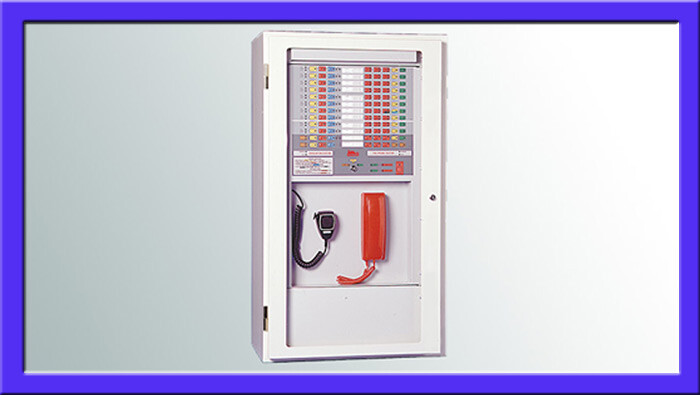Emergencies can occur at any time, and it is crucial for buildings to have effective systems in place to ensure the safety of occupants. One such system is an Emergency Warning and Intercommunication System (EWIS). In this guide, we will explore what an EWIS is, how it works, the benefits of having one in a building, the different types of EWIS systems available, and the regulations and standards governing their implementation.
What is an Emergency Warning and Intercommunication System (EWIS)?
An Emergency Warning and Intercommunication System, or EWIS, is a comprehensive system that combines emergency warning systems and intercommunication systems. It is designed to provide occupants in a building with timely and clear warnings in the event of an emergency, as well as a means of communication during an evacuation.
Definition of EWIS
An EWIS system is a complex system that generates and controls audible warning signals via speakers strategically placed throughout a building. It can also include visual warning lights that may be activated automatically by a fire alarm system or initiated manually by building occupants or trained fire wardens.
Components of an EWIS
The main components of an EWIS include fire alarm systems, emergency control panels, dedicated emergency telephone systems, and fire warden intercommunication points. These components work together to deliver effective emergency warnings and facilitate communication during evacuations.
Importance of EWIS in Buildings
Having an EWIS in a building is of utmost importance for the following reasons:
- Enhanced fire safety
- Effective evacuation processes
- Improved communication for building occupants
How does an Emergency Warning System work?
An EWIS system operates in a coordinated manner to ensure the safety of everyone in a building in the event of an emergency. Here is an overview of how it works:
Overview of EWIS Operation
When a fire alarm is triggered, the EWIS system is activated, and warning signals are immediately broadcasted throughout the building. These audible warning signals can alert occupants to the presence of a fire or other emergency, prompting them to initiate evacuation procedures.
Integration with Fire Alarm Systems
The EWIS system is integrated with the building’s fire alarm system, allowing for seamless communication between the two. This integration ensures that warning signals are synchronized and in accordance with the type and location of the emergency.
Role of Audible Warning Signals
Audible warning signals play a crucial role in an EWIS system. They are designed to be loud and clear, ensuring that occupants can easily hear and recognize the emergency warnings. These signals guide occupants towards safe evacuation routes and aid in avoiding panic or confusion.
What are the benefits of having an EWIS system in a building?
Implementing an EWIS system in a building offers numerous benefits that contribute to the overall safety and well-being of occupants. Some of these benefits include:
Enhanced Fire Safety
An EWIS system can significantly enhance fire safety by providing early and accurate warnings. This allows occupants to take appropriate actions and evacuate the building promptly, reducing the risk of injuries and fatalities.
Effective Evacuation Processes
With the use of an EWIS system, evacuation processes can be carried out more efficiently and orderly. The clear and timely warnings help occupants understand the urgency of the situation and guide them towards the nearest exits or designated assembly points.
Improved Communication for Building Occupants
During an evacuation, communication is vital. An EWIS system enables building occupants to communicate with each other, fire wardens, and emergency responders, ensuring that everyone is informed about the emergency and the necessary actions to take.
What are the different types of EWIS systems?
There are various types of EWIS systems available, each catering to different building requirements. Here are some examples:
Dedicated Emergency Telephone Systems
These systems provide occupants with dedicated emergency telephones strategically located throughout the building. Occupants can use these telephones to directly contact emergency services or seek guidance during emergencies.
Emergency Control Panel Systems
Emergency control panel systems allow for centralized control of the EWIS system. This enables authorized personnel to activate warning signals, communicate emergency instructions, and monitor the status of the system.
Fire Warden Intercommunication Point Systems
Fire warden intercommunication point systems consist of intercom stations installed in key locations within a building. These stations allow fire wardens to communicate with each other and provide instructions to building occupants to ensure a safe and orderly evacuation.
What are the regulations and standards for EWIS systems?
EWIS systems must comply with national building codes and adhere to international standards to ensure their effectiveness and reliability. Additionally, regular testing and maintenance of these systems are mandatory to ensure their proper functioning. Some key aspects of the regulations and standards for EWIS systems include:
Compliance with National Building Codes
EWIS systems must meet the requirements set by the relevant national building codes. These codes outline the design, installation, and maintenance standards necessary to ensure the safety and efficiency of EWIS systems.
Adherence to International Standards
International standards, such as those set by the International Electrotechnical Commission (IEC), provide guidelines for the design and performance of EWIS systems. Adhering to these standards ensures the compatibility and interoperability of EWIS systems across different countries.
Requirements for Regular Testing and Maintenance
To ensure that EWIS systems are always operational, regular testing and maintenance are crucial. These systems should be inspected and tested periodically to identify any faults or deficiencies and address them promptly to maintain their reliability.
In conclusion, an Emergency Warning and Intercommunication System (EWIS) is an essential component of a building’s safety infrastructure. It provides clear and timely warnings during emergencies, facilitates communication among building occupants and emergency responders, and ensures efficient evacuation processes. By adhering to regulations and standards, implementing an appropriate EWIS system can greatly enhance the safety and peace of mind of everyone within a building.
